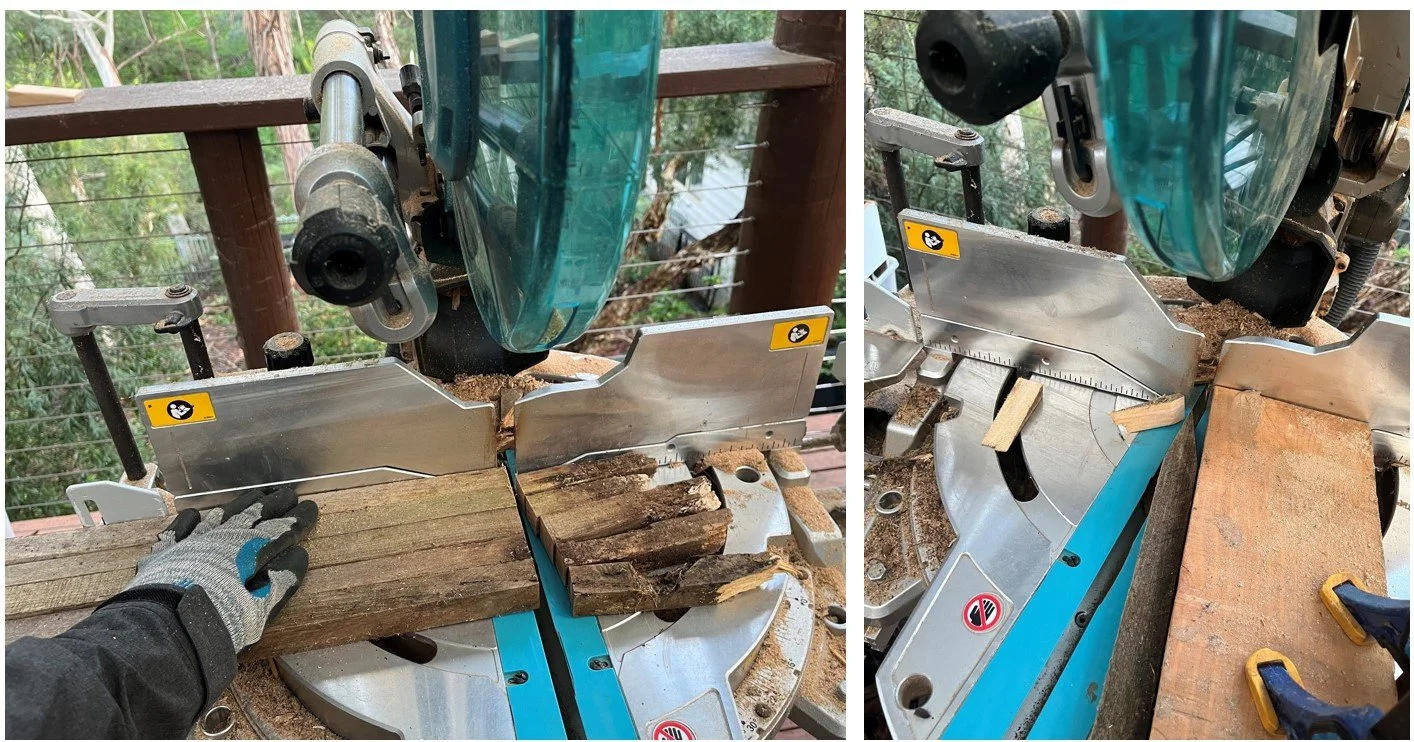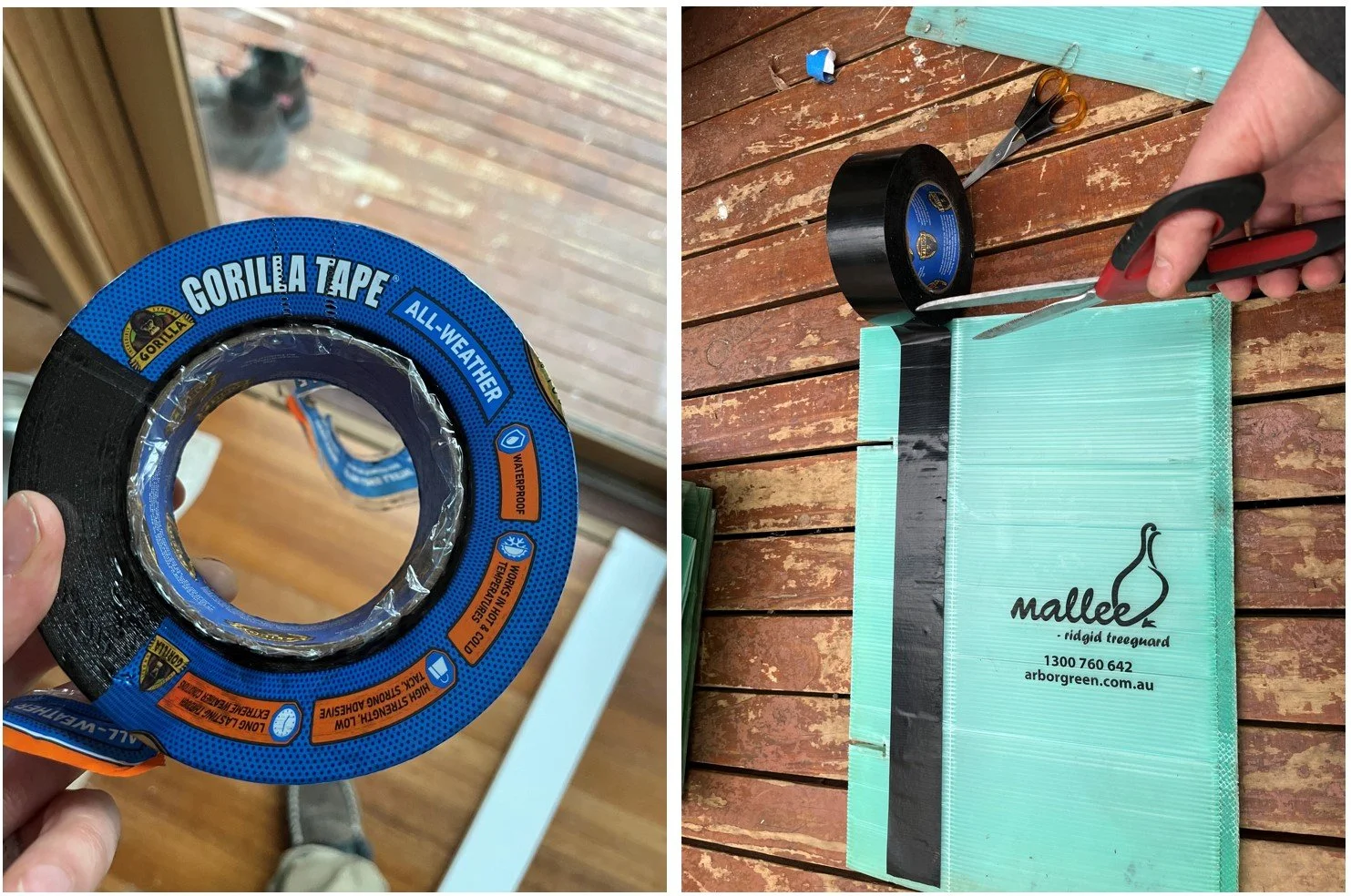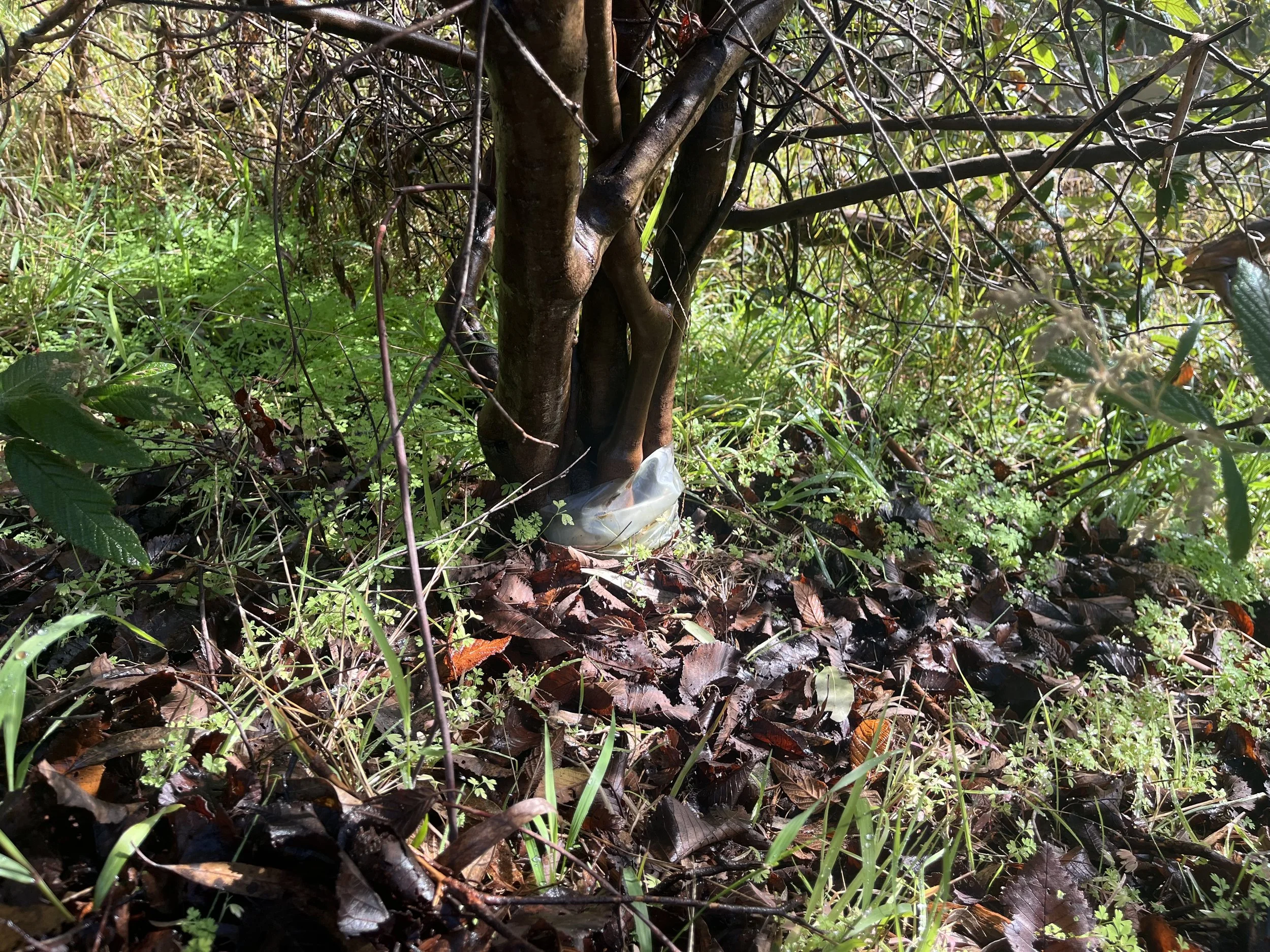Stake and guard recovery and re-use
Through the course of our conservation efforts, we unavoidably use some consumable products such as stakes and guards. These are very important for protecting small plants from grazing by animals such as kangaroos, wombats, and rabbits. Once plants become established they can fend for themselves, and we can safely remove the guards. We believe it is important to consider the full financial and environmental costs of these products in their production, transportation, temporary placement in the environment, and eventual disposal at the end of their working life. Considering that our group plants over 1,000 plants every year, it all adds up to a lot of stakes and guards and it requires some careful planning and consideration to manage them responsibly. We are working to minimise the unintended negative impacts of using consumable products such as stakes and guards. This story goes into some detail about some of the challenges involved and what we are doing to try and address them.
Photos above: Pink Bells (Tetratheca ciliata) in full flower and ready to be freed from the guard. They won’t grow much taller than this and they are not particularly palatable for animals to nibble on.
One approach to minimising our impact is to source high-quality products that have a long lifespan and can be re-used multiple times. We reduce some waste by using rigid corflute guards that have been designed to only require a single stake. As a bonus, this makes planting faster which is more efficient use of volunteer time and ultimately allows us to put more plants in the ground at each working bee.
We also go to some effort to extend the lifespan of our stakes and guards by repairing and restoring them after use. Stakes will tend to become rotten at the end after a few months, especially when the soil is damp. Fortunately, the majority of the stake usually remains intact for a long time, and we have now developed a process for trimming and re-pointing rotten stakes so they can be re-used.
Photo above: Stakes that have been in the ground for several months tend to become rotten at the ends.
Photo above left: A drop-saw is firstly used to trim the rotten ends off of the stakes. Four or five stakes can be trimmed comfortably in one cut which makes the process quicker. The photo to the right shows the next step, which is to re-cut the point. The point makes it easier to drive the stakes into the ground. This is done by setting the cutting angle to about 12 degrees and clamping a guide board offset from this angle to allow the stake to be held securely while cutting. Two cuts are required to get a good point in the center of the stake.
Photo above: Stakes have been trimmed and re-pointed, ready for another use. There is obviously a limit to how many times this can be done as each time they become a little bit shorter! Eventually they will reach the end of the functional life and can be used for a lower-value purpose such as firewood.
Photo above: An advantage of rigid corflute guards is that they can be packed down flat and stacked neatly which makes them easier to store for future re-use.
Photo above: a slight design flaw in the corflute guards is that after extended use they are susceptible to splitting at the slits where the stake goes in.
Photos above: we are trialing the use of heavy-duty all-weather tape for repairing corflute guards when they split.
Photo above, black polymesh guards are very durable and can also be re-used several times. One drawback however they are more difficult to store after initial use because they are quite springy and will resist sitting flat and being squished into a bag. Weighing them down with a brick or other heavy object for a week or two will help to flatten them for easier and less bulky storage. Note these guards require two stakes which is another slight drawback. One advantage of the polymesh guards over the coflute guards is you can easily see through them from the sides which makes it easier to check how the plants are going and detect any issues such as weeds. Some plants might also prefer the improved airflow.
Photo above: more recently, we invented a low-tech guard stacking system that holds them in place while bundling into a bale for storage.
Photo above: nicely organised guards, ready to be packed away for future re-use.
Photos above: from experience we generally don’t recommend the flexible plastic guards. While they are cheap compared with other guards, the total cost is still high because each guard requires three stakes to hold them in place. They also have a shorter lifespan, and they are messy and bulky to store after initial use.
It is important to remove guards before the plants become too big. Once the plant becomes too tall or the branches too wide, the only way to remove the guard without damaging the plant is to cut it off which is time consuming and limits the opportunity for re-use. Sometimes the branches also become tangled up the guards which is a real pain to deal with.
Photo above: Shrubs such as acacias have outgrown the guards at a planting upstream on Dry Creek that was undertaken by Melbourne Water a few years ago. Unfortunately, the only way to remove guards at this stage is to cut them off. If they had been removed earlier, they could have potentially been re-used. It was otherwise a very successful planting that has created excellent habitat for small birds which are often seen flitting about in there. We appreciate the work of Melbourne Water in undertaking this planting which has overall had a very positive impact in the local area and is complementary to the work we are doing downstream on the Plenty. It is unfortunate however that short-term budget allocations in many Government agencies often don’t factor in the costs of follow up work such as guard removal. Some of our Friends group members and others in the community have been taking initiative to remove some of these stakes and guards and we are re-using any that are still in reasonable condition. We hope that Melbourne Water can improve their project planning in the future.
Photo above: some of the stakes and guards we salvaged from the Melbourne Water planting upstream on the Dry Creek. We will restore and re-use many of these in our future plantings downstream.
Photo above: a flexible plastic guard that has been left on for far too long on a Hazel Pommaderis (Pommaderris aspera) which is a large shrub. This looks pretty scrappy and may begin to harm the tree if it stays on much longer. It is hopefully not one of ours from a previous planting but in any case we will take responsibility for removing it.
Photo above: Sadly, some guards were washed downstream in the 2022 floods. We are not sure this one pictured is one of ours but as a general rule, we are mindful not to use guards when planting in the flood zone. Our plantings in recent years have been on higher ground and were not inundated during the 2022 floods.
It is difficult to eliminate all possible unintended negative impacts of our conservation activities, but we aim to keep these to a minimum and hopefully have an overwhelmingly positive benefit to the environment and community. We don’t always get it 100% right, but we are constantly learning and improving. We hope that by sharing some of our experiences, others in the conservation community can also benefit and we can work towards best practice.














